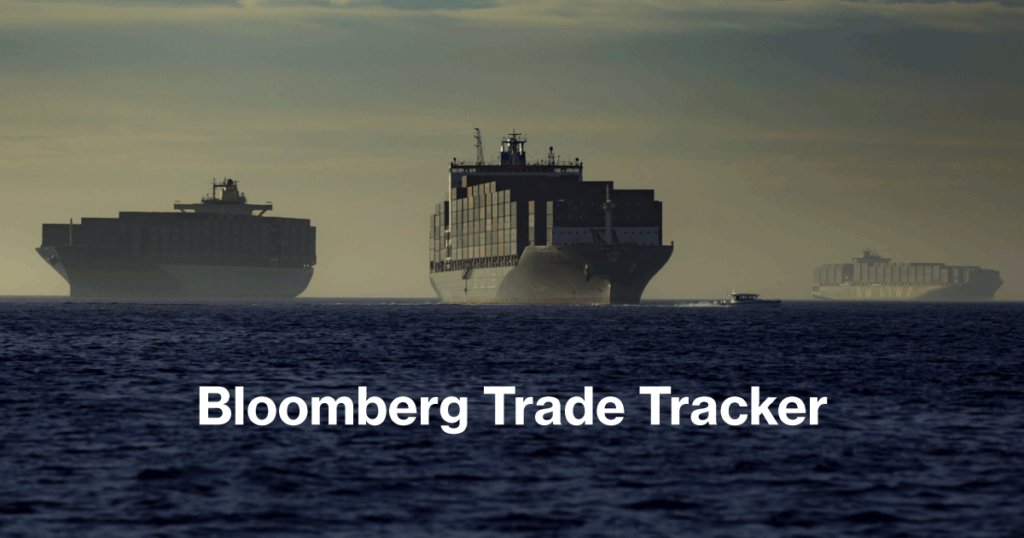Tariffs have loomed over global trade since November and the day of reckoning is approaching as President-elect Donald Trump — who’s promised new levies — is set to be inaugurated.
The path of global trade from here will depend largely on the leader of the world’s largest economy: the timing, size and duration of his tariffs, which countries and products are targeted, and the potential for retaliation. Hanging in the balance is $24 trillion in world goods trade.
Bloomberg’s Trade Tracker showed two out of 10 key measures of international trade were in “below normal” territory, seven were in the “normal” zone and one “above normal,” matching the previous month. The tracker was created during Trump’s first administration to gauge the impact of his trade war.
With just about a month to go until the Jan. 20 inauguration, companies are steeling themselves for what comes next. Some are frontloading imports, according to FedEx Corp. and US inventories data, while factories in China are mulling new production hubs and customers. About two-thirds of businesses view a trade war as a “very significant” risk to the global economy over the next two years, according to a survey from Oxford Economics.
In certain industries, companies such as chemicals and plastics goods maker LyondellBasell Industries NV have already seen a drop in orders due to inventory buildup and uncertainty.
“Investors should brace themselves for tariffs to be announced early in the new administration,” Ronald Temple, Lazard’s chief market strategist, said in a December report. “The pendulum swing away from globalization, multilateralism, and relative geopolitical stability is likely underappreciated.”
For now, most factories seem to be on hold, awaiting clear policy direction. Global manufacturing, as measured by JPMorgan’s PMI index, has teetered on the edge of slight expansion or contraction toward the end of the year. Initial exports from South Korea, a bellwether for worldwide demand given the country’s diversity of exports, were little changed in December.
Executives have been peppered with analyst questions on earnings calls throughout the fourth quarter, but generally say they’re prepared.
Everyone’s talking about tariffs “but when might they come in, and how comprehensive will they be? It’s the multi-billion-dollar question,” said Inga Fechner, a global trade economist at ING Group.
The reality is that businesses have been contending with protectionism and its discontents for nearly a decade now. To adapt, they’ve built factories outside of China — including those owned by Chinese firms — expanded into new markets, rerouted goods, or simply absorbed the tariff impact. If the 2018-2019 trade war offers any lesson, it’s that companies will eventually find ways to adjust.
There will be winners and losers from tariffs. Take Malaysia’s Top Glove Corp Bhd, one of the world’s largest makers of disposable medical gloves. Its US sales skyrocketed 120% in the fourth quarter from the previous quarter, as customers pivoted away from Chinese suppliers, who are set to get hit with higher tariffs announced by the Biden administration.
More are set to potentially benefit. The shift in US imports away from China — which now comprise about 14% of US imports, down from 22% in 2017 — has boosted orders from a handful of nations including Vietnam and Mexico.
We’ve selected measures across shipping, sentiment and export volumes to watch. For the clearest indication, we measured how far each gauge is from historic norms. The data below update in real time from the Bloomberg Terminal, while the text does not update.
Supply chains drive global trade. Stay informed with the latest developments in our Supply Lines newsletter, delivered weekdays.


